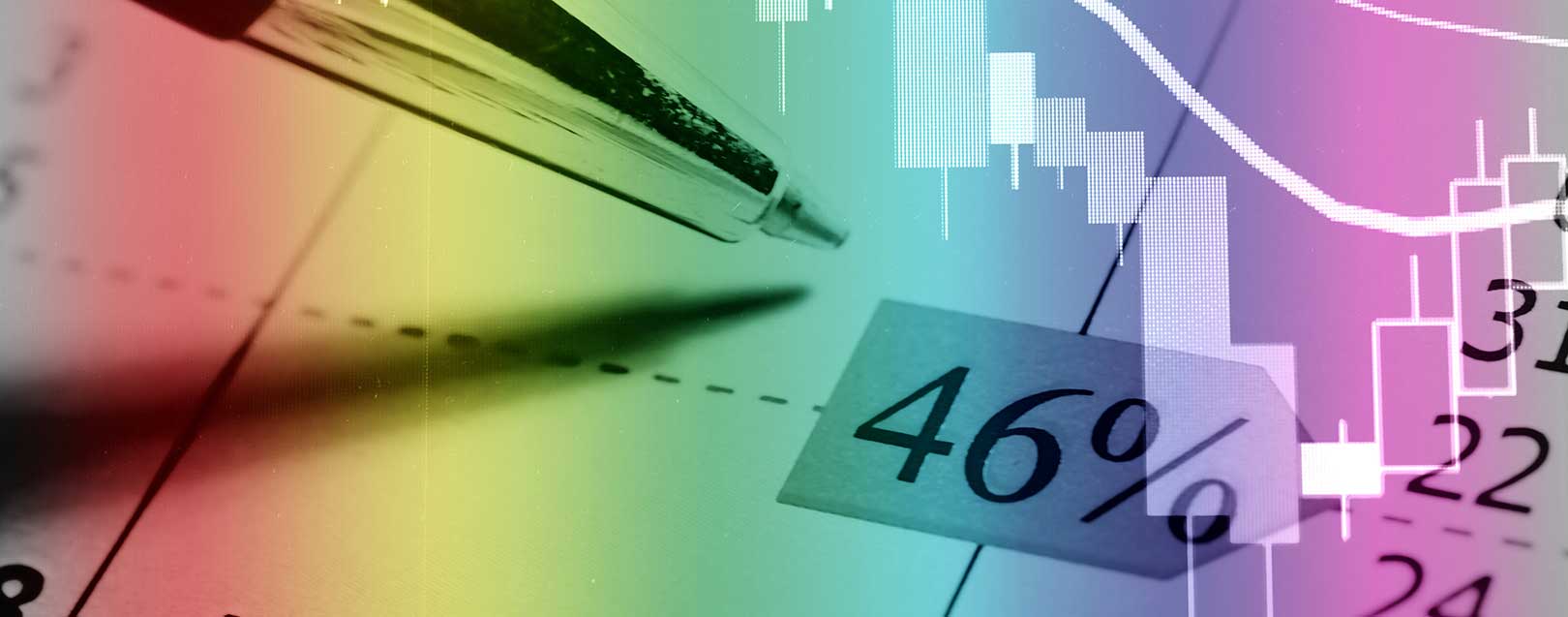
The week that was: oil, sugar and core sector growth
By Abin Daya
It is very rare that you will find a month in which all the 8 core sector industries have had positive growth. No, it did not happen in Feb 2017; but it happened a year back – in Feb 2016! Before that it happened in 2010 – that too, three months in a row!
In the case of Feb 2016, what made the month even more special was that 4 out of 8 core sector industries grew in double digits! Understandably, when something like that happens, you expect a significantly high rate of growth for the sector. Core sector grew at 9.4% in Feb 2016.
Compare that with the core sector performance a year later, in Feb 2017. Such a stark difference! 5 out of the 8 industries had negative growth. One of them, Cement, declining in double digits! Of the other 3, none of them had double digit growth.
I would have expected a negative growth for the overall sector in such a scenario.
It was purely a game of weightages which pulled the core sector into positive growth. All the three industries with positive growth – Electricity, Steel & Coal – are high weightage industries. This pulled growth to a marginal 1% y-o-y during the month. Sectoral performances during March and April of last year have also been fairly decent, and it remains to be seen how the sector fares in the coming two months.
The other major story last week was the policy announcement by MPC. While the repo rate remained at the same level, what surprised was the hiking up of the reverse repo rate, narrowing the gap between the two policy rates to just 25 bps. While the obvious objective of the increase is to mop up the excess liquidity in the system, another implication will be that call money rates will tend to align with the repo rate due to the narrowing gap between the two.
An impending sugar shortage has prompted the government to consider a proposal for permitting duty free import of sugar, with conditions. While the aim is to check prices in the domestic market, this will also help to maintain a better closing stock at the end of the current sugar year, than otherwise possible.
The development rights of the Farzan-B gas field in Iran seem to have come in between oil commerce of India and Iran. India wants Iran to award the rights quickly to ONGC Videsh Ltd (OVL) and in an attempt to nudge Teheran to do so, have dropped crude oil offtake from Iran. Iran has countered by changing payment terms and reducing discounts. Considering that India is the 2nd largest buyer of Iranian oil, and Iran is the 2nd largest oil supplier for India, it will be interesting to see how this pans out.
Finally, FX reserves have risen for 6 weeks in a row now, and have increased by $7.23Bn in this period to reach $369.95Bn as on 31 Mar 2017. These are the highest yearly closing levels ever. However, it is not clear how long RBI can continue to intervene in this manner, due to the surplus INR liquidity already available in the system. INR has been appreciating for 6 weeks in a row now, and every intervention to buy USD and prevent INR from appreciating too much infuses additional INR funds into the system. Let us hope that the increase in reverse repo will take out sufficient INR funds from the market, and give enough ammo to RBI to continue its interventions.
As always, expect your comments at [email protected]
Core sector growth disappoints in Feb 2017
- Growth in the 8 core infrastructure industries fell to a 15-month low of 1% in Feb 2017; in Nov 2015, core sector growth had dipped to a low of 0.6%

- Core sector growth had spiked to a an almost 6 year high of 9.4%, a year back in Feb 2016 (after 9.9% of Apr 2010), and the high base would have had some effect on the numbers this year
- Out of the four sectors which posted double digit growth in Feb 2016, three – Refinery Products, Fertilisers & Cement – posted y-o-y negative growth this year

- Cement, which has been on a negative growth path recently, posted its straight third month of decline; while the industry had grown by 13.5% in Feb last year, it declined by 15.8% this year
- Similarly, Electricity sector, which had grown by a robust 15.8% in Feb 16, grew by a mere 1.5% this year
- Coal (7.1% as against 3.3% last year) and Steel (8.7% vs. 6.1% last year) were the only two industries which grew at a higher rate than of last year
- Another sector which has not had a great run recently is Refinery Products, where growth was in negative territory, consecutively for the second month

- Feb is usually a month where overall refinery production declines m-o-m compared to Jan and March, due to the lesser number of days
- However, the decline this time has been steeper than last year, and this has led to negative growth of -2.3% y-o-y
- This also aligns with the fuel consumption data, which suggests that Y-O-Y growth has been declining for the past two months

- The core sector performance in Feb 2017 seems to have been influenced by base effects due to strong performance in Feb 2016
- Need to wait and see if this effect veers off in Mar 2017 and performance gets normalised, considering that growth in Mar 2016 was a more reasonable 6.4%
- While the YTD Apr-Feb performance for FY17 at 4.4% is marginally better than 3.5% during same period in FY16, this is due to the strong growth in the early part of the FY
- Performance of 5 industries – Coal, Crude Oil, Fertilisers, Cement and Electricity – have declined as compared to Apr-Feb period last year
- The saving grace has been the strong performance of 9.95% in Steel, and the relatively high weightage it carries (second highest at 6.684) in the overall core sector index
RBI maintains repo rate at same level
- The upside risks to inflation that had become evident in the recent times had prompted analysts to predict that RBI would maintain rates at the existing levels in the current policy review
- In line with expectations, the Monetary Policy Committee kept the repo rate unchanged at 6.25%
- However, with a view to mop up the excess liquidity available in the system, the reverse repo rate has been hiked by 25 bps to 6.00%, narrowing the gap between the two policy rates to 25 bps
- With such a narrow corridor between the rates at which RBI lends to banks and at which they borrow from the banks, the volatility in the call money market will reduce, and rates could remain closely aligned with the repo rate

- With global growth indicators strengthening, RBI expects exports to firm up going forward; however, domestic economic activity has remained weak, except for certain sectors
- Imports have increased in the recent months due to the hardening of commodity prices such as crude oil and coal
- Further increase in commodity prices due to improving global economic activity will have an effect on inflation, and hence this remains a huge concern for RBI
Impending sugar shortage prompts government to permit duty free imports
- As we have mentioned multiple times in this column earlier, we are looking at a significant drop in sugar production and closing stock levels during the current Sugar Year, which is set to close on Sep 30, 2017
- According to current projections, India will produce just 20.3Mn tonnes of sugar, against an annual consumption of around 25Mn tonnes
- The production combined with opening stock of around 7.7Mn tonnes will be sufficient to take care of domestic demand for the current year and the government has also imposed a 20% duty to discourage exports and thereby keep prices in check
- However, the projected closing stock of around 3Mn tonnes will barely be sufficient for two month’s usage in the next Sugar Year,
- With this in mind, and with a view to further check domestic prices, the government is now considering a proposal to permit duty free import of raw sugar up to 500,000 tonnes, till June 12, 2017
- As per the proposal, the imports will be subject to zonal quantity restrictions, and will only be open to millers/refiners having their own refining capacity
- Looking at the projected quantities, there is possibility that there will be further imports during the current Sugar Year

India’s oil imports from Iran increase
- Indian imports of Crude from Iran increased significantly in FY17, to touch above 500,000 barrels per day (bpd), after lifting of the Western sanctions
- Shipments have touched an average of 541,000 bpd for the period between Apr-Mar of the just concluded FY
- However, the position is changing a bit, as Indian importers have started to reduce imports from Iran by a fifth, using the same as a bargaining tool for an oil extraction deal in favour of ONGC’s overseas arm, OVL
- Consequentially, Iran has hardened the trade terms that it offers to Indian buyers, and has dismissed the ‘strong arm tactics’ of India
- From a credit period of 90 days that it used to give to Indian importers earlier, Teheran now gives a 60 day credit period, less by one-third
- This is still much better than the 15 day of credit offered by other Middle East sellers
- Iran also used to provide a discount of 80% on the freight charges for transporting the freight; in response to the purchase cuts, they have now reduced the discount to 60% of freight charges
- India is the second biggest oil buyer of Iran, after China and was among the few countries which continued to import from them despite sanctions
- For India too, prior to sanctions, Iran was the second largest supplier after Saudi Arabia; that position has now been occupied by Iraq
- Considering the large share in trade both parties carry in each other’s books, it will not be in the interest of either to let this run for long without resolution. Hopefully, it will be done so soon.
Some numbers to note*
*figures in brackets indicate movement during the week
- FX reserves: $369.95Bn as on Mar 31, 2017, as against $367.93Bn in the previous week (+$2.02Bn)
- USD/INR: Rs.64.2800/$ (INR appreciated by Re 0.56)
- Indian Crude Basket: $53.05 (+3.3%)/Rs.3,447.21 (+3.37%)
- Equity Markets: Sensex 29,706.61 (+0.29%); NIFTY 9,198.30 (+0.27%)
- LIBOR: 6 Mths – 143 bppa; 12 Mths – 180 bppa
MIBOR: Overnight – 6.16; 1 month – 6.36; 3 months – 6.49

Abin Daya the author of 'Basics of Trade: An India Perspective' is a FEMA expert, a career transaction banker, with close to 15 years of experience in corporate and transaction banking, in India.






 to success.
to success.